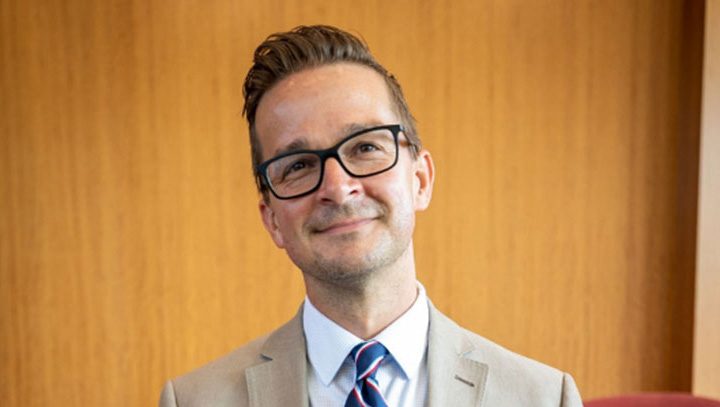I’ve written before about the modular meal, a “cook once, feed many” approach that leaves everyone satisfied, even — gasp! — happy. For this, as for many things, I am indebted to Julia Moskin, who years ago canonized this approach and its merits: “Dishes like this are adaptable to many life stages, like the children’s furniture systems that supposedly allow you to turn a crib into a bed, then into a desk, and finally into a pair of chic reading glasses.”
Grain bowls are the ne plus ultra of the modular meal, a style of dinner named after the vessel you use. If that’s not an invitation to customize, I don’t know what is. Our new recipe for burrito bowls is your friend here or try sesame salmon bowls or farro broccoli bowls.
1. Burrito Bowls
You can’t go wrong with rice, beans and gooey cheese swaddled in a warm flour tortilla. But this streamlined bowl version of the burrito delivers more texture and color in just a few steps. Cook rice and beans together in a skillet, then melt cheese on top. Spoon into bowls, then top with a big chunk of avocado and a quick corn salsa, which can be made with fresh or canned corn. If your fresh corn is sweet, use its kernels raw, or cook it by microwaving the cobs in their husks for three minutes before shucking. Feel free to add tomatoes, pico de gallo or radishes to the bowls as well.
By Ali Slagle
Yield: 4 servings
Total time: 35 minutes
INGREDIENTS
1/4 cup avocado or other neutral-tasting oil
1 medium red onion, coarsely chopped, divided
1 jalapeno, seeds removed if desired, coarsely chopped, divided
1/2 teaspoon ground cumin
1 cup long-grain white rice
1 (15-ounce) can black or pinto beans
Kosher salt
3 cups corn kernels (from 3 cobs, or two drained 15-ounce cans, or frozen corn, thawed and shaken dry)
1/4 cup chopped cilantro, plus more leaves for garnish
1 lime
4 ounces grated Monterey Jack cheese (1 cup)
1 large avocado
DIRECTIONS
1. In a large skillet or Dutch oven with a lid, heat 2 tablespoons oil over medium. Add half the red onion and half the jalapeno, along with the cumin, and cook until fragrant and softened, 3 to 5 minutes. Add the rice and beans (including the bean liquid). Fill the can with water and add that, too (1 3/4 cups). Season with 1 teaspoon salt. When boiling, cover, reduce heat to low and cook undisturbed until the rice is tender, 18 to 20 minutes.
2. Meanwhile, in a medium bowl, stir together the remaining half red onion, half jalapeno and 2 tablespoons oil; the corn; cilantro; and juice from the lime. Season to taste with salt.
3. When the rice is ready, turn off the heat and sprinkle with cheese. Cover and let rest for 4 minutes. Spoon the rice and beans into bowls. Quarter the avocado and add a piece to each bowl, then top with the corn salsa and a few leaves of cilantro.
2. Salmon and Green Beans in Red Pepper Sauce
Salmon and Green Beans in Red Pepper Sauce. Food Stylist: Samantha Seneviratne. (Rachel Vanni/The New York Times)
Resist the notion that fish should be paired with vegetables that keep their crunch in the cooking process. Rather, make these green beans, which hold their shape while they gently and endearingly collapse, contributing a generous texture to a roasted red pepper sauce. Crisp-skinned salmon is the star protein here and simmers alongside the beans in the sauce, which is balanced, rich and tasty with anchovies and miso. A sauce this good works with any protein that benefits from a gentle simmer.
By Yewande Komolafe
Yield: 4 servings
Total time: 45 minutes
INGREDIENTS
1 small red onion, peeled and chopped (about 1 cup)
1 (16-ounce) jar roasted red bell peppers, drained and chopped (about 1 1/2 cups)
1 Scotch bonnet or habanero chile, seeds in or out
4 garlic cloves, peeled
5 tablespoons olive oil, divided
4 salmon fillets (about 6 ounces each), skin on or off
Salt and black pepper
8 ounces green beans, trimmed and cut into 2-inch pieces (about 2 cups)
6 to 8 oil-packed anchovies
1 tablespoon white or red miso
1/2 cup thinly sliced fresh scallions
Rice, for serving
1 lemon, cut in wedges
DIRECTIONS
1. Prepare the red pepper sauce: Using a food processor or blender, coarsely chop the onion, roasted red peppers, Scotch bonnet and garlic by pulsing them together.
2. Heat a large (10-inch) cast iron or nonstick skillet over high and add 2 tablespoons oil.
3. Place the salmon fillets in the hot oil, skin side down, season lightly with salt and pepper and cook without moving until the contact side is gently browned, about 5 minutes. Move the salmon to a plate, setting it skin side up, and set aside.
4. Turn the heat down to medium-high, add 1 tablespoon oil to the skillet, the green beans, anchovies and miso. Cook, stirring frequently, mashing the anchovies with the spatula until miso is broken up and anchovies are dissolved. Add 1/2 cup water to the skillet and bring to a simmer. Cook until green beans are just wrinkly, 4 to 6 minutes.
5. Reduce heat to medium, pour the red pepper sauce into the skillet. Stir in 1/2 cup water and the remaining 2 tablespoons oil. Simmer the sauce, stirring frequently until slightly reduced and the liquid and oil collect toward the center of the skillet, 5 to 6 minutes. Taste for seasoning and adjust with additional salt and pepper if necessary.
6. Using a wooden spoon, create divots in the sauce and green beans. Nestle the fillets in the divots, skin side up. Cook until the fish is fork-tender, the sauce reduced and the green beans are softened, 6 to 8 minutes.
7. Garnish with scallions and serve fish, green beans and sauce immediately over rice, with lemon wedges for squeezing.
3. Chicken and Broccoli Raab Pasta
Chicken and Broccoli Rabe Pasta. Food Stylist: Spencer Richards. (Rachel Vanni/The New York Times)
The combination of pasta, garlic and olive oil has long been one of the best ways to feed many mouths with ease. Here, that garlicky pasta is joined by browned chunks of chicken, tender and bitter broccoli raab and spicy cherry peppers. Browning boneless, skinless chicken breast takes little effort if done right — the key is to not overcrowd the pan. The chicken cooks through quickly, so sauteing it in batches adds minimal time and maximum flavor to this recipe. Feel free to use broccolini instead of broccoli raab, sweet cherry peppers instead of spicy or even another short pasta instead of cavatelli — just don’t skip the freshly grated Parmesan on top.
By Dan Pelosi
Yield: 4 to 6 servings
Total time: 45 minutes
INGREDIENTS
Salt and pepper
1 large bunch broccoli raab (about 1 1/4 pounds), tough stems removed, cut into 1-inch pieces
1 pound cavatelli or other short pasta
1 pound boneless, skinless chicken breasts
1/ cup plus 2 tablespoons extra-virgin olive oil, divided, plus more if desired
8 garlic cloves, thinly sliced
2 tablespoons chopped jarred hot cherry peppers
Grated Parmesan, for serving
DIRECTIONS
1. Bring a large pot of salted water to boil. Add the broccoli raab to the boiling water, cooking until the broccoli raab is a vibrant green color, 60 to 90 seconds. Using a slotted spoon, transfer the broccoli raab to a bowl, then rinse with cold water and strain. Set aside. Add the pasta to the boiling water and cook until al dente, then drain.
2. Meanwhile, pat the chicken dry with paper towels, and then cut into 1-inch cubes and salt generously. Place a large pan over medium heat and add 1 tablespoon of olive oil. When the oil is shimmering add half of the chicken. Cook the chicken for 3 minutes, then flip over to cook for 3 minutes more, until chicken is browned on both sides. Remove chicken from pan and set aside. Add another tablespoon of oil and cook the remaining chicken using the same method, then combine all of the chicken in the pan.
3. Add the remaining 1/4 cup olive oil to the pan along with the garlic and cherry peppers and cook, stirring frequently, until the garlic is golden, about 1 minute. Add the broccoli raab and cooked pasta and stir to combine. Add more olive oil, as needed, to coat the pasta. Season to taste. Serve warm, topped with freshly grated Parmesan.
4. Crispy Beans and Juicy Tomatoes Over Tahini Yogurt
Crispy Beans and Juicy Tomatoes Over Tahini Yogurt. Food Stylist: Hadas Smirnoff. (David Malosh/The New York Times.)
Pantry ingredients — canned beans, garlic and olive oil — turn into a satisfying plant-forward weeknight dinner thanks to the magic of a hot oven. Roasting beans transforms them from soft to shockingly crisp while cherry tomatoes, even out-of-season supermarket ones, morph into glistening, juicy pops of sweetness. While the oven works its charm, whip up a creamy tahini-yogurt sauce brightened by lemon and garlic. The cooling yogurt with warm tomatoes and crispy beans makes for a fun contrast of textures and temperatures. Top it off with arugula dressed with the sweet, garlicky tomato juices and scoop up everything with crusty bread. If you don’t have good yogurt, this meal is also excellent served over Whipped Tofu Ricotta. (
By Nisha Vora
Yield: 4 servings
Total time: 45 minutes
INGREDIENTS
5 fat garlic cloves
2 (15-ounce) cans cannellini beans, drained and rinsed
4 tablespoons extra-virgin olive oil, divided
1 tablespoon plus 1/2 teaspoon dried oregano, divided
Kosher salt (such as Diamond Crystal) and black pepper
2 pints cherry or grape tomatoes (about 22 ounces)
1 teaspoon organic cane sugar
1 large lemon
8 ounces creamy coconut yogurt (see Tip below)
3 tablespoons well-stirred tahini, plus more as desired
1/4 heaping teaspoon ground coriander
1 teaspoon Aleppo pepper (or 1/2 teaspoon crushed red pepper)
3 to 4 handfuls baby arugula (1 1/2 to 2 ounces)
Crusty bread or pita, for serving
DIRECTIONS
1. Arrange a rack in the top third of the oven and another on the lowest level. Heat oven to 425 degrees.
2. Slice 3 of the garlic cloves thinly but not paper thin; set aside the other 2 for the tahini yogurt.
3. Transfer the beans to a clean dish towel. Gently rub to remove as much moisture as you can without crushing them. On a rimmed sheet pan, gently toss the beans with 2 tablespoons olive oil, 1 tablespoon oregano, 1 teaspoon salt and a generous amount of coarsely ground black pepper. Taste a bean and add more salt if needed for the beans to taste well-seasoned. Spread in a single layer.
4. In a 13-by-9-inch baking pan, combine the tomatoes, sugar (use only 1/2 teaspoon if the tomatoes are very sweet), the sliced garlic and remaining 1/2 teaspoon oregano. Drizzle with 1 1/2 tablespoons olive oil, a heaping 1/2 teaspoon salt and a generous amount of coarsely ground black pepper. Toss well with your hands.
5. Roast the tomatoes on the top rack and the beans on the bottom for 25 minutes. If the tomatoes are wrinkly and starting to burst, they’re done. (Larger tomatoes may need another 5 minutes.) If the beans are golden, crispy and split open, they’re done. If not, shake the pan back and forth and roast for 5 minutes more.
6. While everything roasts, make the tahini yogurt: Into a bowl, finely grate the zest from the lemon, then halve the lemon and squeeze in 2 tablespoons juice. Grate the remaining 2 garlic cloves into the same bowl. Add the yogurt, tahini, coriander, Aleppo pepper, 1/2 teaspoon salt and coarsely ground black pepper to taste. Stir to combine, then taste and add more salt, lemon juice for brightness, or more tahini for nutty richness. Cover and refrigerate until ready to use, up to 3 days.
7. When ready to serve, smear the tahini yogurt across a serving platter. Spoon the roasted tomatoes on top (keeping the juices for the arugula) and scatter the beans on top. Pile the arugula on top and drizzle with the tomato juices from the pan. Squeeze on a bit of lemon, add a pinch of salt or pepper (or both), and toss the arugula with your hands. Scoop up everything with bread.
Tips: The tahini yogurt sauce is best with a creamy, rich coconut yogurt, such as Culina or CocoJune. If your yogurt is on the sour side, stir in 1/2 teaspoon sugar.
5. Black Pepper Beef and Cabbage Stir-Fry
Black Pepper Beef and Cabbage Stir-Fry. Food Sylist: Barrett Washburne. (Andrew Purcell/The New York Times)
Coarsely crushed black peppercorns star in this quick weeknight dish, which is built primarily from pantry staples. Don’t be shy about adding the entire tablespoon of pepper, as it balances out the richness of the beef and adds a lightly spicy bite to the dish. A quick rub of garlic, brown sugar, salt, pepper and cornstarch seasons the beef; the cornstarch helps tenderize the beef and later imparts a silky texture to the sauce. Feel free to marinate the beef up to 8 hours ahead and cook when you’re ready. If leftovers remain, tuck them into a crunchy baguette or roll them into a wrap.
By Sue Li
Yield: 2 to 4 servings
Total time: 20 minutes
INGREDIENTS
1 tablespoon whole black peppercorns, coarsely crushed with the bottom of a cup or pan
3 garlic cloves, grated
2 teaspoons light brown sugar
1 teaspoon cornstarch
Kosher salt
3/4 pound sirloin steak, thinly sliced crosswise
3 tablespoons sunflower oil or other neutral oil
2 tablespoons soy sauce
1/2 head small green cabbage (about 8 ounces), thinly sliced
1 tablespoon sherry vinegar
1 tablespoon toasted sesame seeds, crushed with your fingertips
2 scallions, thinly sliced
Cooked rice, for serving
DIRECTIONS
1. Add peppercorns, garlic, brown sugar, cornstarch and 1 teaspoon salt to a medium bowl and stir to combine. Add sliced steak and toss to coat.
2. Heat the oil in a large cast-iron skillet over medium-high. Add steak and cook, stirring frequently, until some of the edges are lightly browned, 3 to 4 minutes. Add soy sauce and toss beef to coat, about 1 minute. Using a slotted spoon, transfer beef to a bowl or plate.
3. Add cabbage to skillet, spread in an even layer and let cook, undisturbed, for 1 minute so that some pieces caramelize in the pan. Toss and cook cabbage, stirring occasionally, until crisp-tender, 4 to 6 minutes. Stir in vinegar and season with salt.
4. Add steak and any juices back to the skillet, and stir until well combined with the cabbage and warmed through, about 1 minute. Top with toasted sesame seeds and scallions; serve with rice.
The Dubai chocolate craze is now about much more than bars
Want to eat more plant-based meals? Maggie Baird, Billie Eilish’s mom, has some ideas
Recipe: With a skillet, moussaka doesn’t have to be a project dish
With over 700 years of history, mixiotes should be on your Mexican food bucket list
This might be the easiest way to make ratatouille




